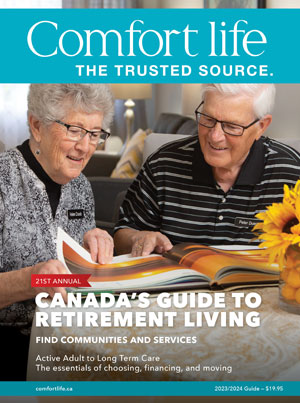There’s nothing fun about taxes, to be sure. Apart from the drudgery of filling out forms, tax time is, for many Canadians, simply uncomfortable. It’s the one time of year when we have to look objectively at aspects of our lives—how much we earn or don’t earn; how much we pay or don’t pay—that can, for a range of reasons, be hard for us to face.
Tax forms, too, can lack a veneer of humanity. A prime example is T2201, the Disability Tax Credit Certificate. Claiming any deductions under the T2201 can risk feeling like a declaration of disability. We’d all rather define ourselves in our abilities, recognizing the things we can do, rather than any limitations. For people who have lived all of their lives through their own resources, claiming a deduction due to disability can feel unsavory.
Don’t risk paying twice
The term “disability” is as unfortunate as it is misleading. People living with an ostomy, for example, don’t consider themselves disabled, and certainly they aren’t. That said, they bear a cost of living that most people don’t, not limited to the cost of ostomy supplies. They are able to claim some portion of that cost at tax time, and indeed they should. The means to do that is the T2201.
Similarly, anyone living in a retirement residence is paying, each month, for both accommodation and services. Services are all those things that you wouldn’t be getting in another setting: meals, housekeeping, access to in-house fitness programs, lifestyle assistance, and medication administration.
Yes, all of that can represent quite a range of service, everything from a few meals each week to round the clock medical support. Additionally, it can address ongoing therapies as well as mental and cognitive therapies, hearing loss, vision impairment, mobility—things that, because they accrue gradually over time, may not readily be considered as falling within the T2201.
The fact is, the credit can cover a lot and it’s very much worth accounting the deductions that you are owed, especially in cases where when you’re already paying for them. Not reporting under the T2201 could mean that you’re paying twice, in a sense, for the services provided by your residence.
It can make a big difference
The credit is there for a reason, and everyone who is eligible for it can—and should—make use of it. The point of the T2201 is to allow people to claim fees that they are paying which aren’t discretionary. It can make a considerable difference in an ability to afford ongoing services, as seniors can be approved for up to $10,000 of deductions each year.
Those living within residences that offer housekeeping services and meals may be eligible. So too for those living in settings that include lifestyle assistance, medication administration, or that provide fitness programs designed and implemented by qualified staff.
Residents receive letters at tax time from their residences showing how much they pay in rent as well as how much they pay each month for services. If they aren’t accounting that service piece when they file, they could be missing out on some significant savings.
The credit can help with the affordability factor of moving to retirement communities, and otherwise open up a range of opportunity. For example, if a couple is considering moving to a retirement community, they can each apply for the T2201. They can then both write off the maximum amount the government approved them for, especially in cases where the residence charges a second-person fee.
•
—by Glen Herbert




